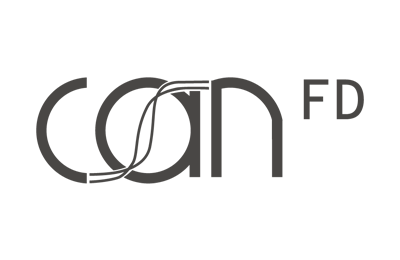Using the FlexRay interface for automotive tests
At the end of the 1990s, the FlexRay consortium was founded to meet the increased requirements of OEMs in terms of bandwidth and transmission reliability. The consortium's goal was a new, fault-tolerant, time-controlled communication system with transmission rates of up to 10 MBit/s.
The FlexRay communication system that emerged from the consortium is used in vehicles, especially for X-by-Wire applications (e.g. steer-by-wire, drive-by-wire), primarily because of its determinism, fault tolerance and high speed. The bus system can be realised in star topology as well as in line or bus topologies. A two-channel system (A and B channel) allows data to be transmitted redundantly. Similar to CAN or LIN, the coupling to the bus medium is implemented by a transceiver.
In the deterministic communication system, the media access procedure on a channel is time-controlled and therefore predictable (TDMA Time Division Multiple Access). When configuring the network, a global cyclic transmission plan (schedule) determines at which time a node or station is allowed to transmit. In addition to the static segment with the precisely defined time and thus transmission slots, there is a dynamic segment for optimal utilisation of the available bandwidth. The communication and access procedure in the dynamic segment is more comparable to that of the CAN bus.
Series 62 high-end Multibus Controller with flexible channel configuration
the high-end standalone box G CAR 6282
- restbus simulation and test of complex control units
- maximum 18 Automotive interfaces in different configurations (CAN FD / LIN / Ethernet)
- with extension board 48 I/O interfaces (16 Digital In, 16 Digital Out, 8 Analogue In, 8 Analogue Out)
- execution of onboard programs in a 64 bit real-time operating system
- performant Flash programming of control units
Highlights of the Series 62 Multibus Controller
G PCIe 6281 / G PXIe 6281 / G CAR 6281
- available as PXI/PCI Express and standalone box
- use for CAN/CAN-FD/LIN/K-Line and FlexRay applications and automotive test systems
- use for restbus simulationen und testing technology in the automotive area, test of complex control units
- maximum 8 automotive interfaces in different configurations (CAN FD / LIN / FlexRay / Ethernet)
- optionally up to 2 FlexRay / 100/1000Base-T1 interfaces
- up to 8 conventional signals (Digital In / Digital Out)
- execution of onboard programs in a 64 bit real-time operating system
- performant Flash programming of control units
 Contact
Contact







